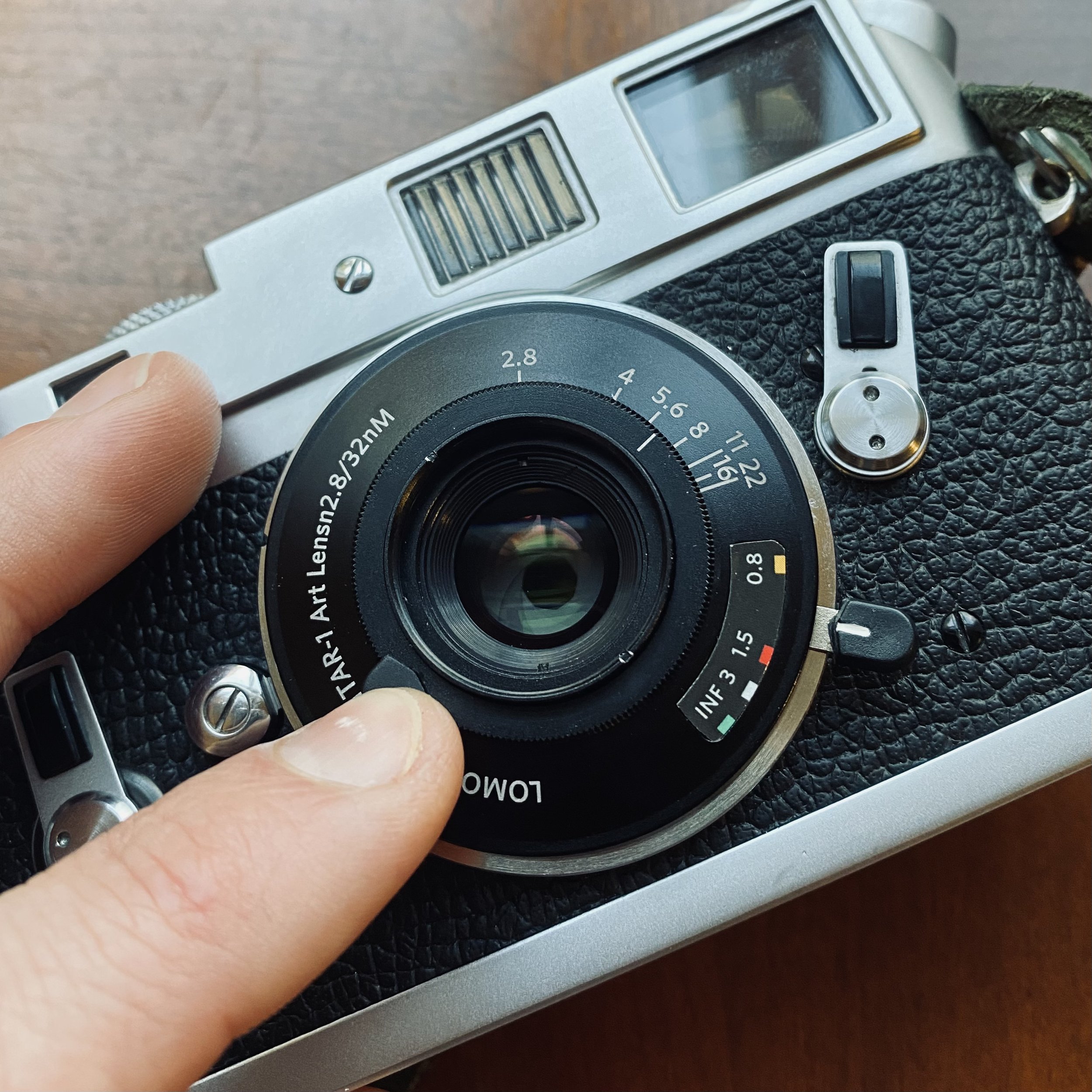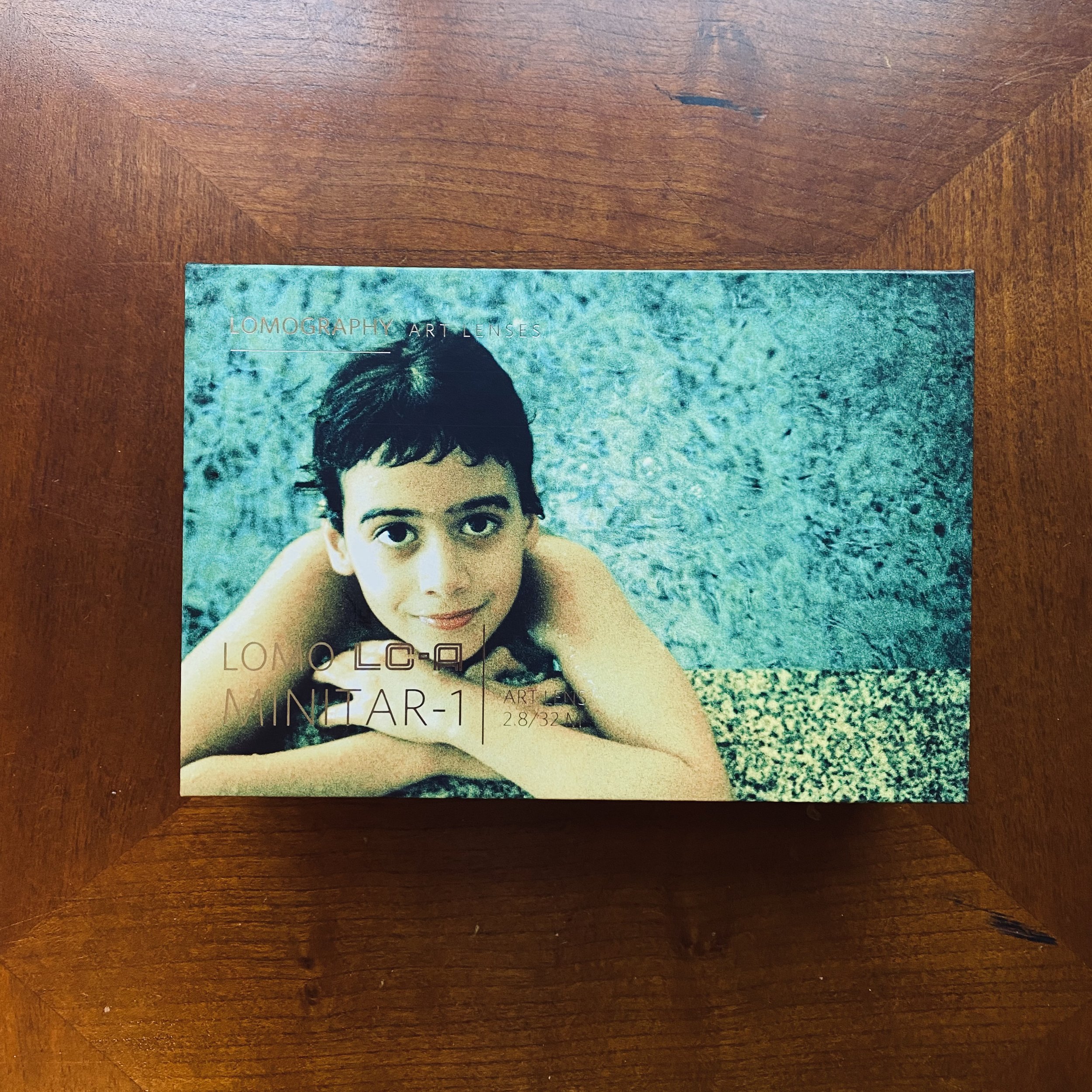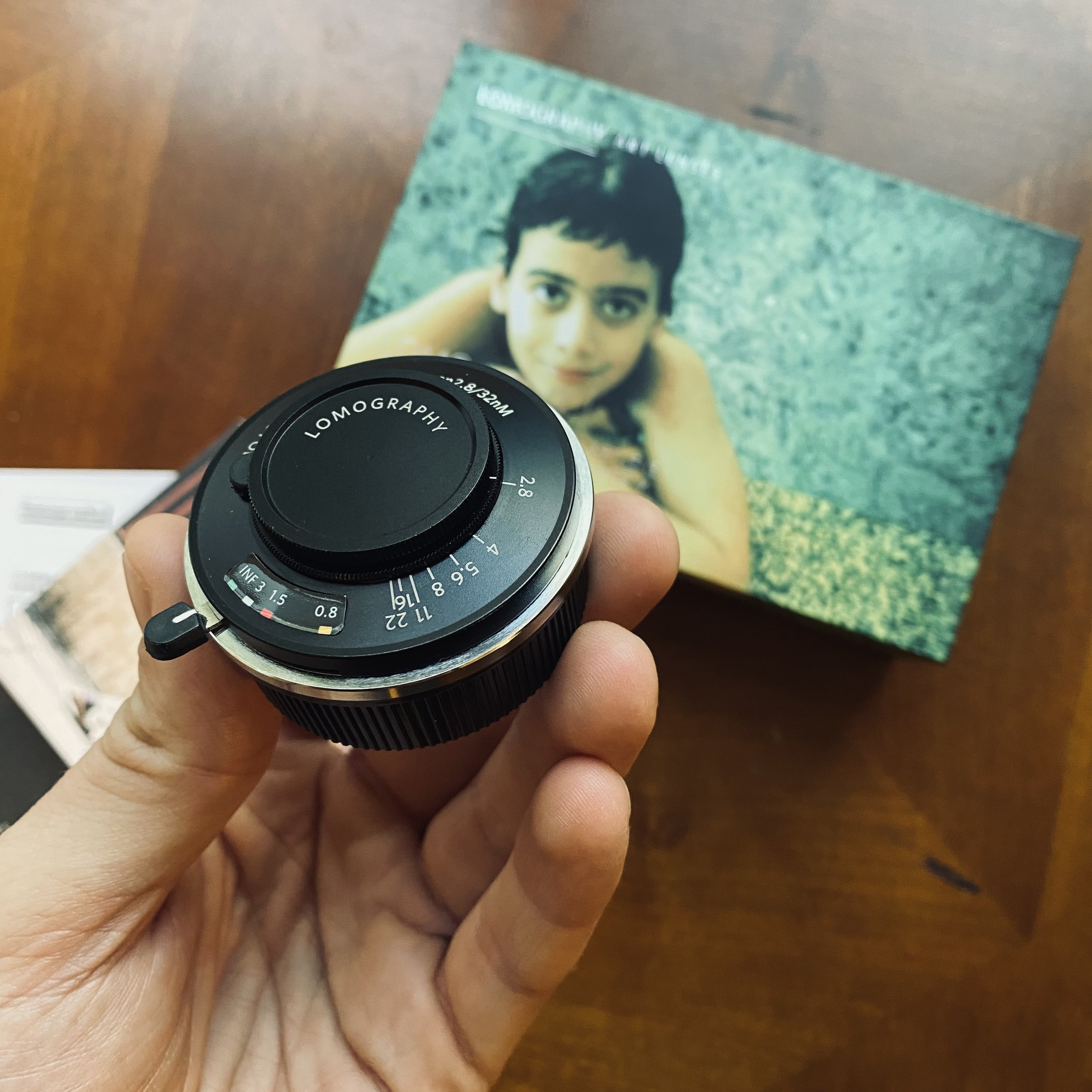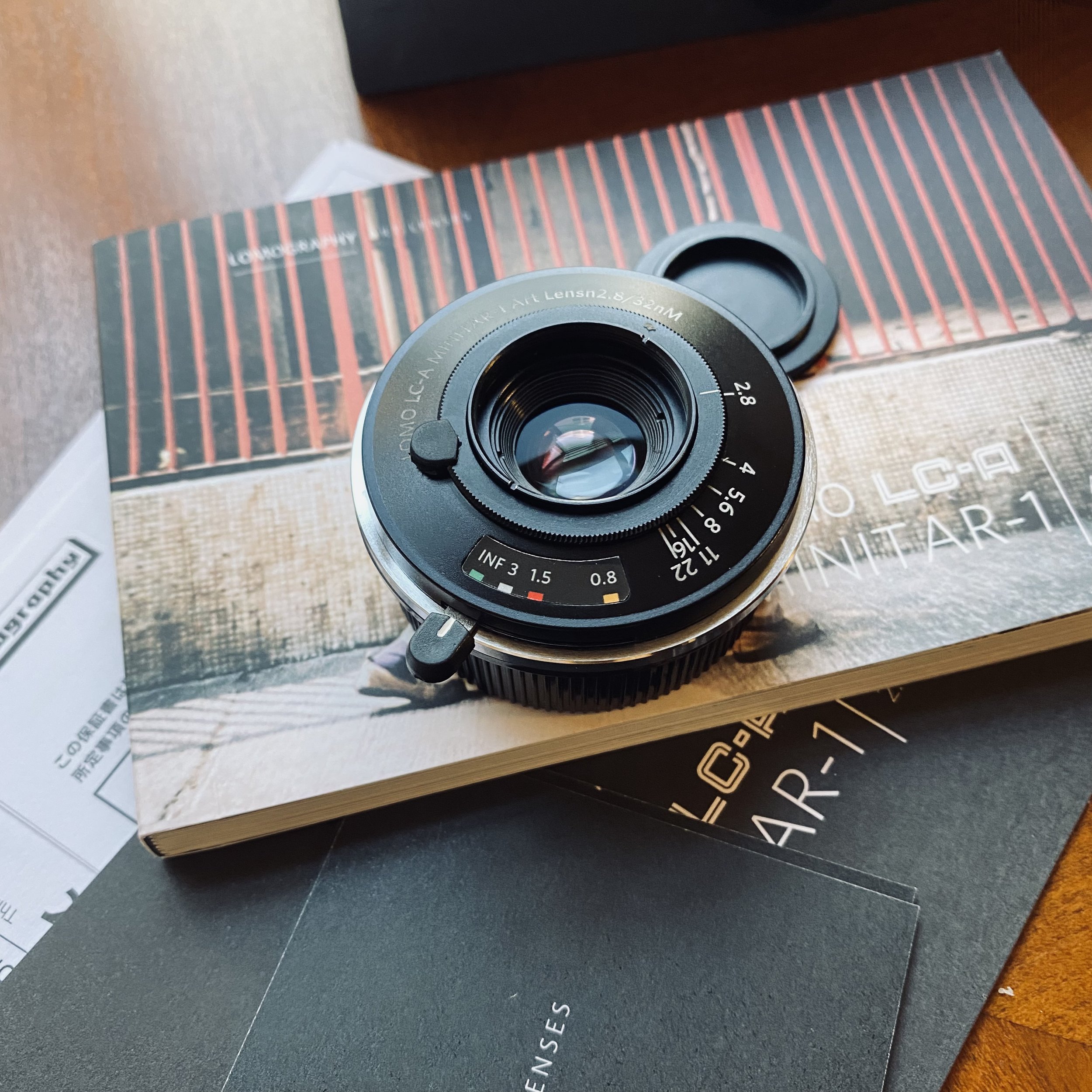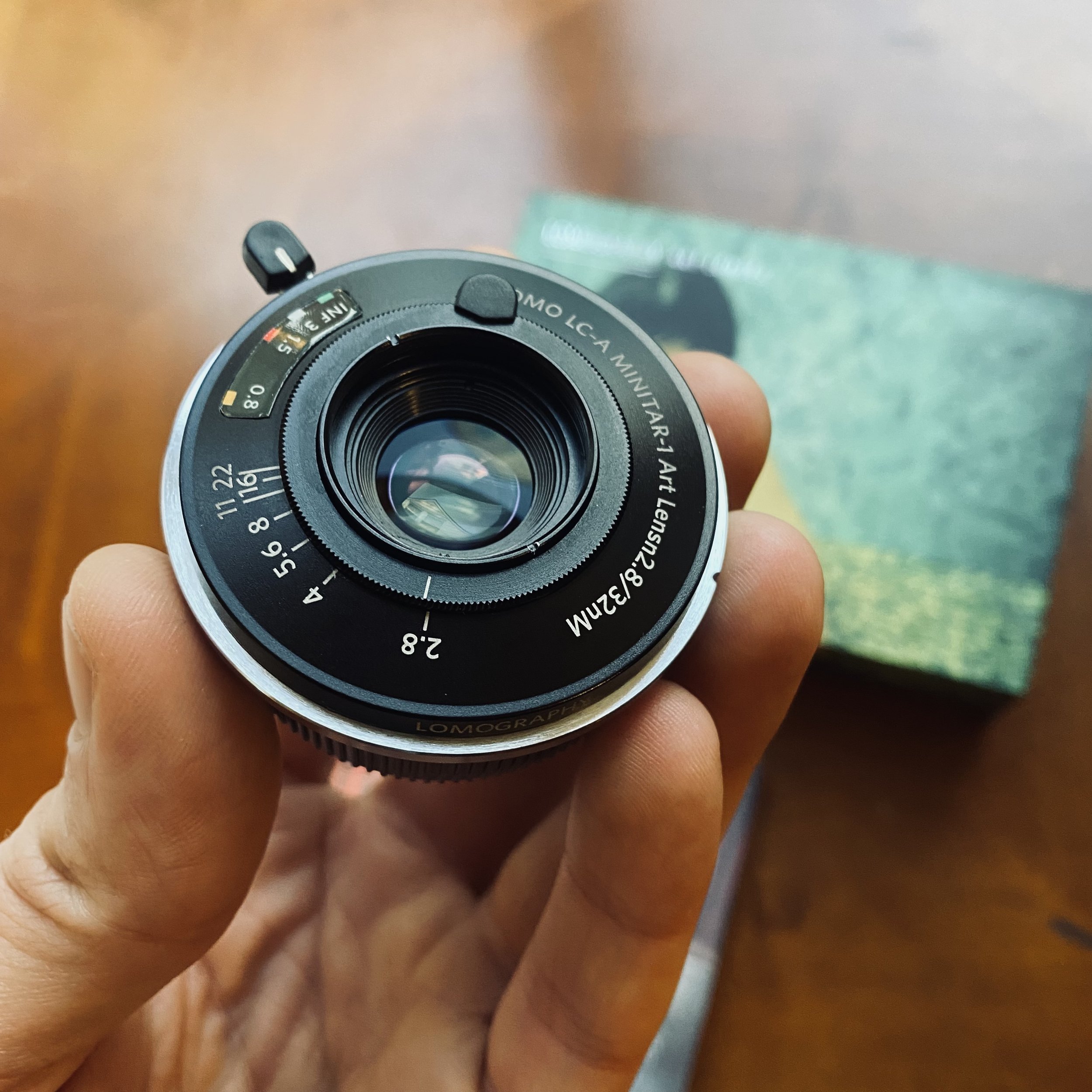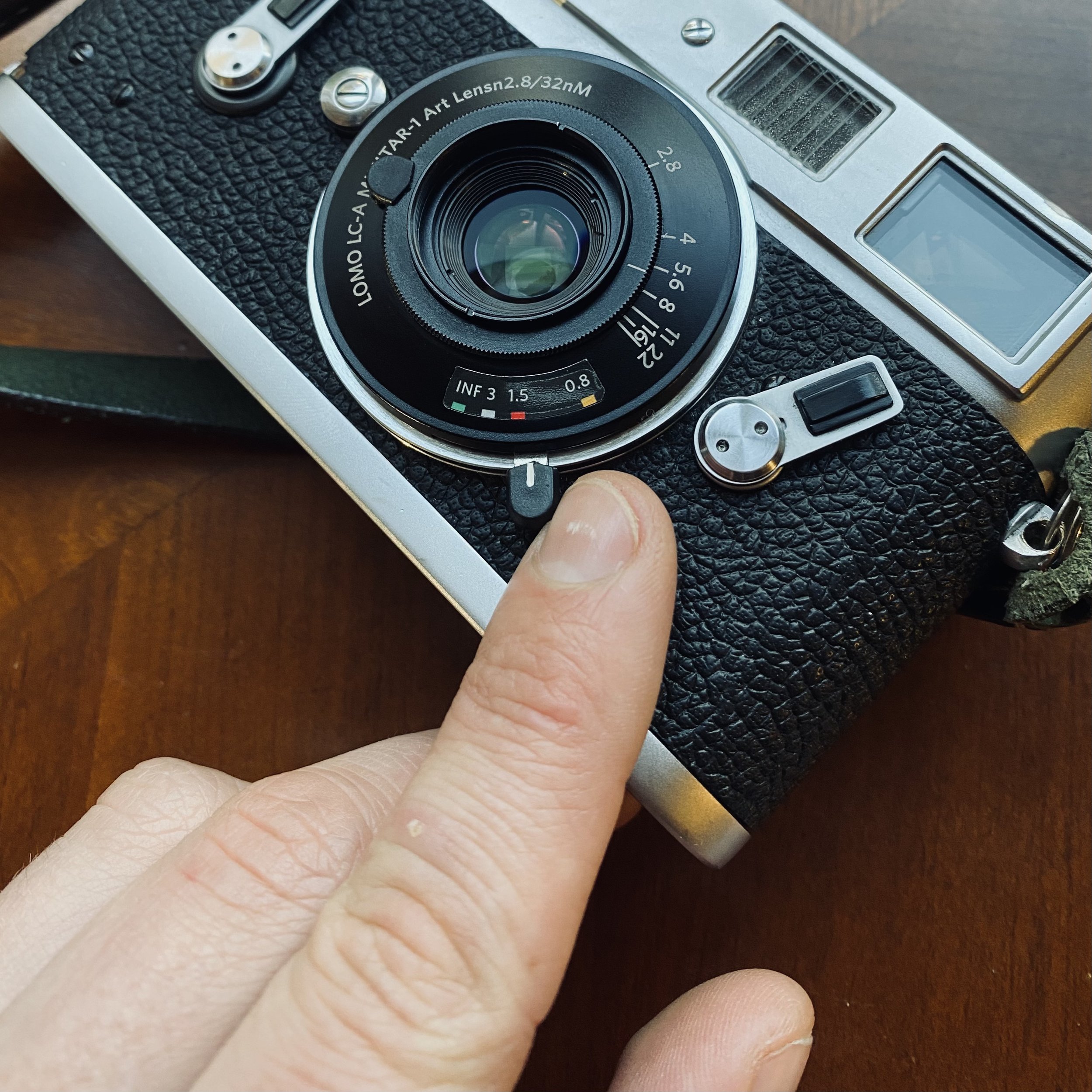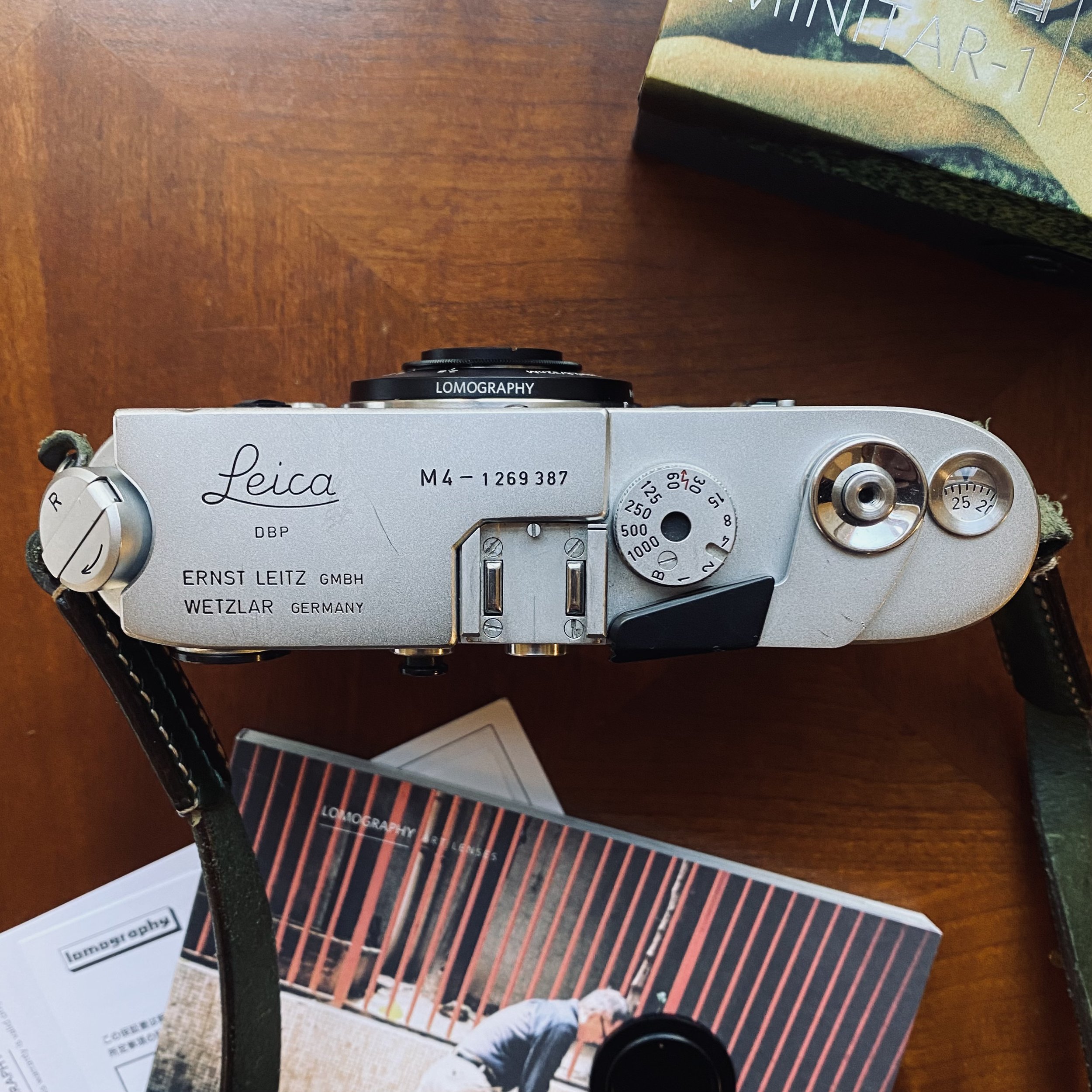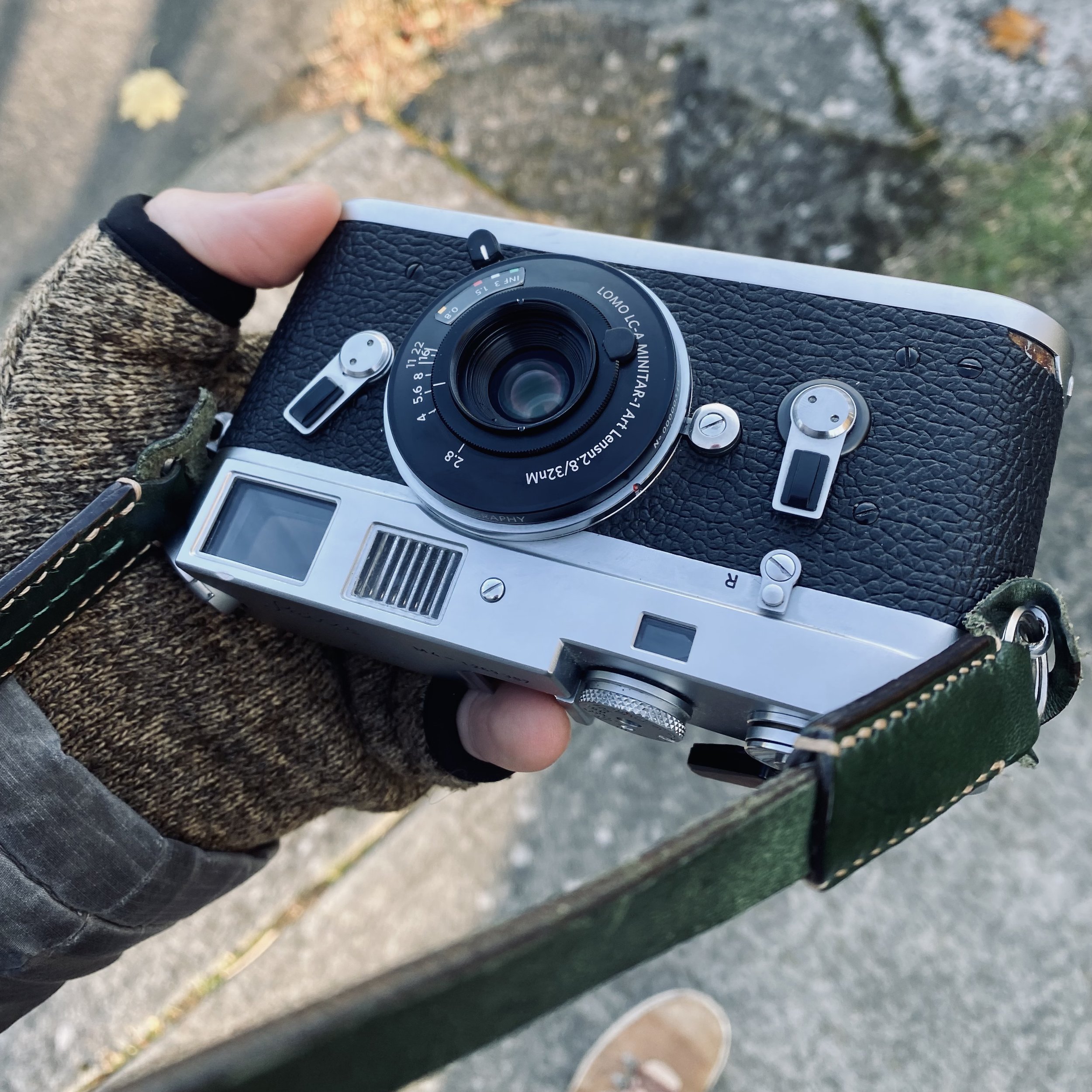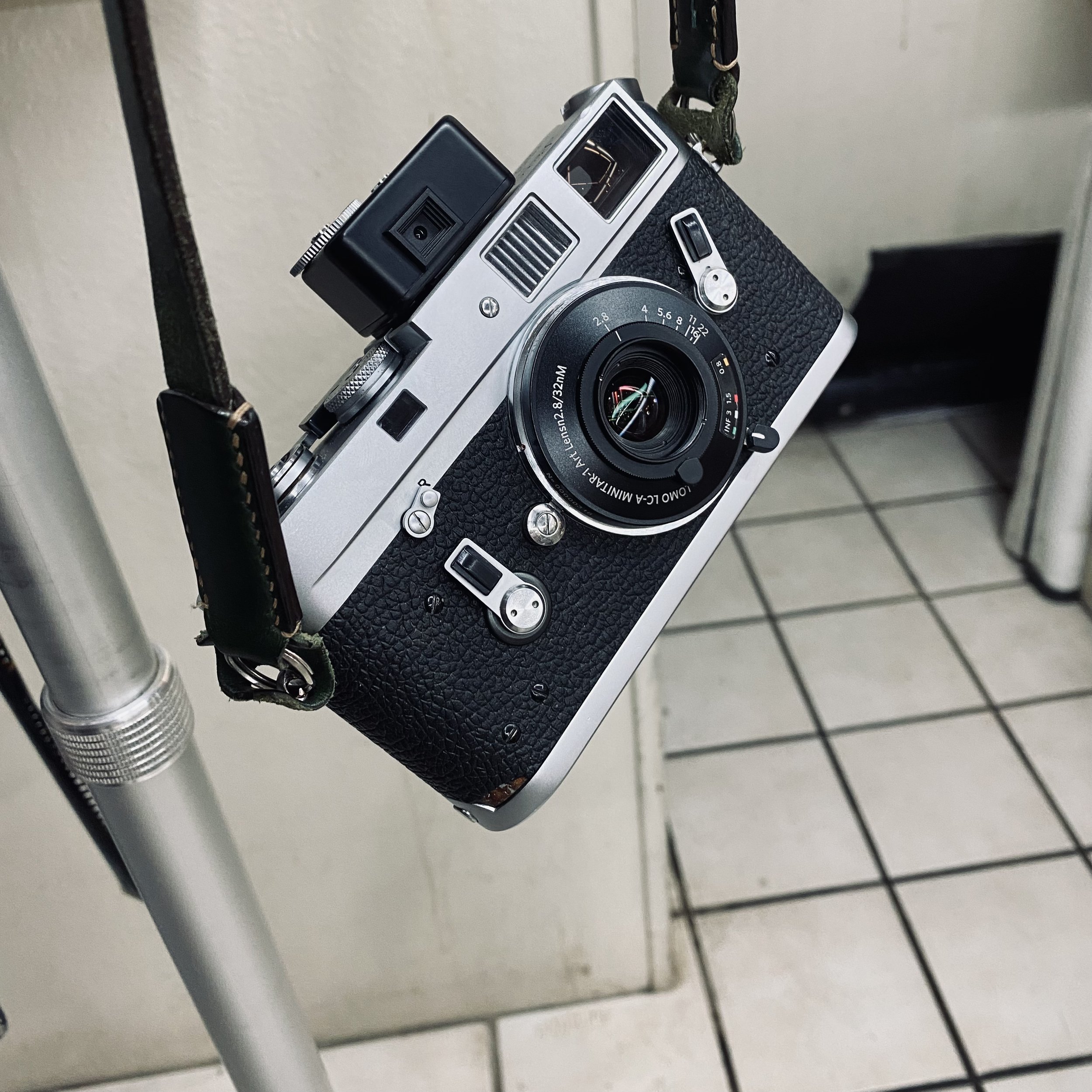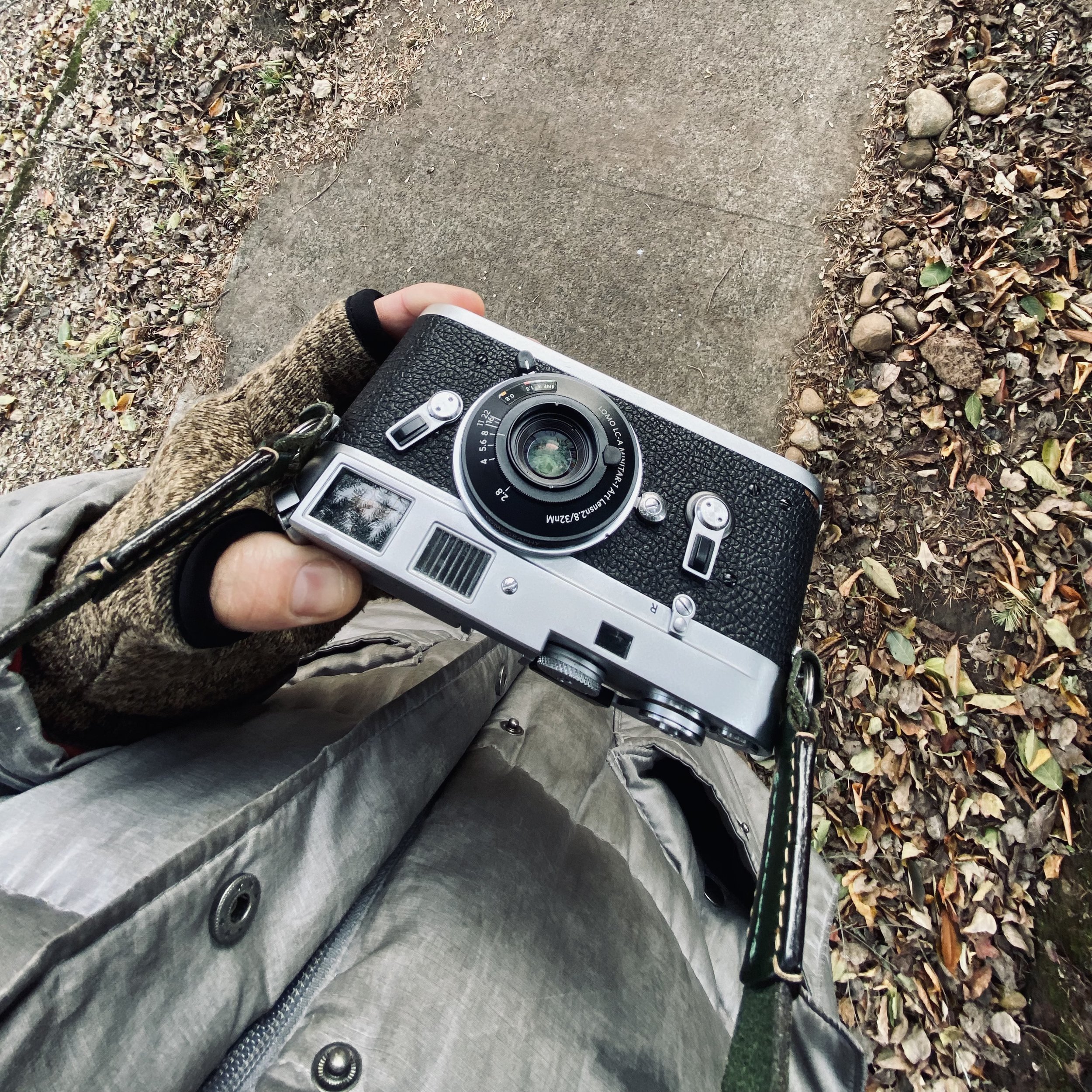LOMO LC-A Minitar-1 32mm f2.8 Art Lens - History, Unboxing, and First Impressions
Gabriel Binder - Blue Moon Camera - December 8, 2022
The LOMO LC-A is a legend among compact cameras. Featuring full program autoexposure and a contrasty 32mm f2.8 Minitar lens in a small and easy-to-use body, the LC-A is an analog cult classic.
Built by the Leningrad Optics and Mechanics Association (LOMO) between 1984-2005, the LC-A is actually a modified copy of another camera design, the Cosina CX-2. While essentially a simplified CX-2 clone, the LC-A greatly exceeded the success of the original, selling thousands of copies and becoming synonymous with LOMO’s analog brand. Much of the LC-A’s success can be explained by its compact dimensions, autoexposure capability, and simple handling. But the most important element to the LC-A’s fame is its fixed 32mm f2.8 Minitar-1 lens.
The LOMO 32mm f2.8 Minitar-1 is known for its high contrast, vivid color reproduction, and strong vignetting. While far more sophisticated than the simple plastic optics found in “toy” cameras like the Holga or Diana, the Minitar-1 renders with a similar lo-fi aesthetic. The images below were taken with a LOMO LC-A on Agfa Color Mission film and exemplify the Minitar-1’s characteristics.
The LC-A is a “zone focus” camera: a small knob allows the user to select one of four focus zones as a quick and simple means of achieving focus. Early LC-A cameras have a helpful indicator in the viewfinder showing which focus zone is selected. While basic, this system is effective and prioritizes attention to subject and composition over precise focus.
LOMO stopped the production of the classic LC-A in 2005, and introduced the LC-A+ in 2006. This camera was even further simplified (manual aperture selection was removed) and production of all LC-A components was moved to China. It was during this time that LOMO began experimenting with other LC-A products, such as the LC-A 120 (which takes larger 120 film) and the lens that is our subject today — the LOMO 32mm f2.8 Minitar-1 Art lens. This lens is the same 3-element optic found in the LC-A+, but rehoused into a Leica M mount with rangefinder coupling and manual aperture control.
The LOMO LC-A Minitar-1 32mm f2.8 Art lens comes packaged in satin-finished box featuring an image of a boy swimming. Undoing the ribbon closure and opening the box, you are greeted by a thick stack of paperwork. In typical Lomography fashion, this includes a manual and warranty cards but focuses on a large booklet of sample images describing the history of LOMO, the LC-A, and the Minitar-1. Beneath the papers sits the lens, covered by a (thankfully included) 22.5mm threaded lens cap marked “Lomography.”
Taking the lens out of the box, the most notable feature is the protruding focus lever and its corresponding display of focus zones on the barrel. As on the LC-A, there are small detents along the lever’s travel allowing it to click into place at the different focus zones for quick snapshots: Inf, 3m, 1.5m, 0.8m. The Minitar-1 is also rangefinder coupled, meaning that it engages the focusing cam of an M-Mount rangefinder camera, giving access to precise focus control not possible on the LC-A. In practice, focusing with the small lever is surprisingly satisfying, allowing more precise focus control than the lever’s short travel suggests. Aperture is controlled via a ring with a thumb tab around the lens bezel and has no click stops. The ring is relatively loose and it is possible to adjust it unintentionally, so it is a good idea to double check it while shooting with the Minitar-1.
Mounted to a Leica M camera, the LOMO 32mm f2.8 Minitar-1 has an almost impossibly thin profile. This is a lens that adds almost no additional size to a body, turning a Leica M4 into a pocket camera. The Minitar-1 has so little weight it makes a Leica mounted with a standard 35mm or 50mm lens seem bulky and front-heavy. The Minitar-1 brings up the 35mm framelines when mounted to a Leica body.
Shooting with the LOMO 32mm f2.8 Minitar-1 is a unique experience. The flat profile of the lens allows you to slide the camera into a jacket pocket, encouraging you to carry the camera when you otherwise might not. While the zone focus system could be helpful in snapshot situations (and provides a tactile link to the original LC-A), I found myself using the rangefinder for precise focus.
LOMO 32mm f2.8 Minitar-1 / Leica M4 / Kodak Portra 400 - Gabriel Binder
The Minitar-1 Art lens does have a similar character to the original Minitar-1 found in the LC-A. Color reproduction is vibrant, and the lens produces strong contrast. Vignetting is noticeable but is not quite as heavy as on the original optic.
The LOMO 32mm f2.8 Minitar-1 Art lens clearly outperforms the original Minitar-1 in sharpness and detail. This may be due to an optical re-formulation of the Minitar-1 when LC-A production was restarted in China in 2006, but is more likely simply due to the fact that the Minitar-1 Art lens can be precisely focused using the rangefinder. Strong contrast and vignetting lead the eye to the center of the image, where the Minitar-1 Art lens performs best.
One thing that surprised me while shooting with the LOMO Minitar-1 Art lens was how much wider its 32mm lens is than 35mm in practice. Images have a subtle but noticeable wide-angle look that isn’t always present when using a 35mm lens, and I had to remind myself that the 35mm frame lines that the LOMO brought up in my M4 were a little tighter than the actual image would be. I noticed this wide-angle character especially in portraiture. As these images of BMC staff member Jesus show, the LOMO Minitar-1 Art will not be mistaken for a portrait optic, but can still render a passable full-body portrait. Even shot wide open at f2.8, the Minitar-1 Art has a deep depth-of-field and no noticeable bokeh.
Overall, the LOMO 32mm f2.8 Minitar-1 Art lens is an impressive re-creation of the LC-A’s legendary optic. Improved optical quality and precision focusing bring new life to the Minitar-1 in Leica M mount, while retaining the quirks and character of the original. This combined with its almost negligible weight and pancake profile make the LOMO Minitar-1 Art lens a compelling addition to an M-mount rangefinder kit. If you would like to find out for yourself, you can find the LOMO 32mm f2.8 Minitar-1 Art lens for sale here on Blue Moon Camera’s site.
-Gabriel Binder
LOMO 32mm f2.8 Minitar-1 / Leica M4 / Kodak Portra 400 - Gabriel Binder
LOMO 32mm f2.8 Minitar-1 / Leica M4 / Kodak Portra 400 - Gabriel Binder



